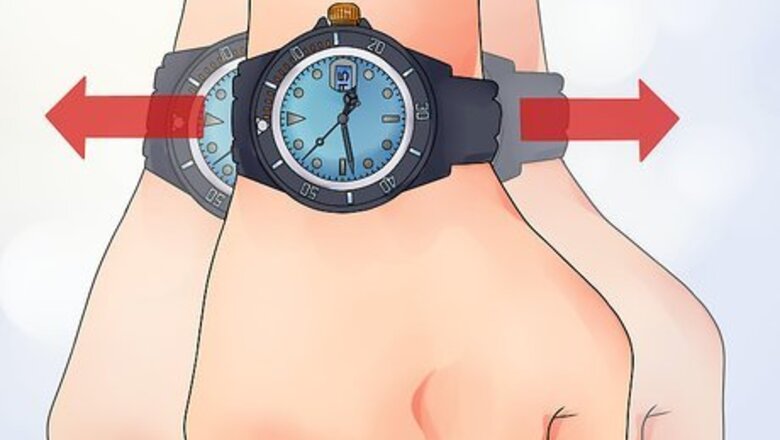
views
X
Research source
Also known as self-winding or perpetual, automatic watches wind themselves using an internal moving weight that winds or rotates when the wearer moves their arm, transferring energy to a power reserve and keeping the watch working.[2]
X
Research source
These watches require no batteries and can be considered “clean energy,” powered by humans. While they do not require daily winding, it is a good idea to wind an automatic watch every so often to ensure that they keep accurate time and enjoy a long life.
Winding your Watch
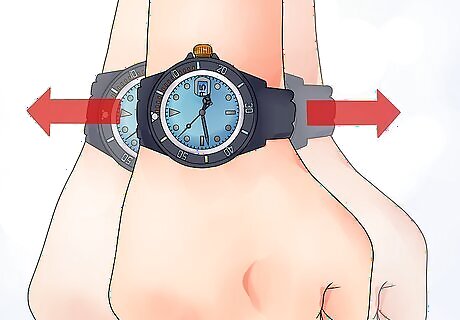
Keep your arm moving. The automatic watch is built with an oscillating metal weight, or rotor, that tracks movement. The oscillating rotor is attached to gears inside the watch that are in turn attached to the mainspring. When the rotor moves, it moves the gears which, in turn, winds the mainspring. This stores energy in the mainspring so that the watch continues ticking. If the watch is not being moved in regular, everyday motion, the mainspring’s energy winds down. If you wear your watch and keep your arm in regular movement, this should be enough to keep the rotor moving and winding up the mainspring. This doesn’t mean, however, that your arm needs to be in constant motion. Automatic watches are built to respond to average, everyday movement in order to keep them working. Typically, automatic watches store energy for up to 48 hours so that they continue working without needing additional winding. People who are not very active, such as elderly people or those confined to bed, may need to wind their automatic watches with more frequency. If you are sick and laid up in bed, your watch may wind down since it’s not getting regular everyday movement. Avoid wearing watch when playing sports that require continuous hand or arm movement, such as tennis, squash or basketball. This will interfere with the automatic winding mechanisms, which are built for regular, everyday arm movement.
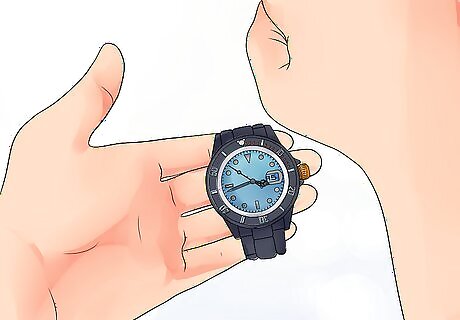
Take the watch off your wrist. While an automatic watch is intended to restore its energy by the rotor winding the mainspring through the motion of your arm, it does also require periodic manual winding to keep the mainspring tight. In order to ensure that the crown is not overly strained when you pull it out and wind it, you should take it off your wrist. Then you will be able to have the right leverage and angle to carefully pull the crown out.
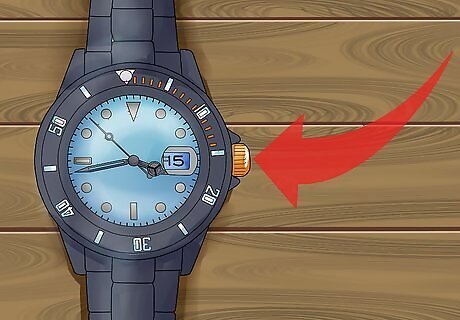
Locate the crown. The crown is the little dial knob usually on the right side of the watch. This knob can be pulled out to set the time and date on the watch. It does not need to be pulled out, however, in order to engage the winding mechanism. The crown usually has three positions or settings that engage certain functions. The first position is when it is pushed all the way in and the watch operates normally. The second position is when the crown is pulled out halfway; this is the position for setting the time or date (depending on your watch). The third position is when the crown is pulled out all the way; this is the position for setting the time or date (depending on your watch). If the watch is waterproof, the crown may be screwed down to provide added waterproofing. You may need to unscrew this crown by turning carefully 4 to 5 times. When you wind the watch, you will push down on the crown at the same time, which will screw it back into place.
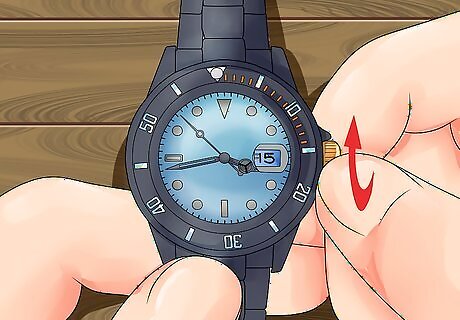
Turn the crown clockwise. Gripping the crown with your forefinger and thumb, twist it gently in a clockwise manner (moving it from bottom to top towards the 12 on the watch face if you are looking directly at the watch). Turn it approximately 30-40 times or until the second hand starts moving in order to fully wind the watch. Winding keeps the mainspring tight and at full energy reserve, which is also supplemented by keeping your watch in motion. Contrary to popular belief, you cannot typically over-wind an automatic watch. Modern automatic watches are constructed to protect against this possibility. You should still be very gentle when turning the crown and stop winding when you feel resistance.
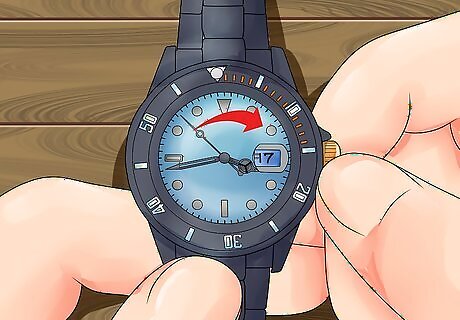
Always set the time by moving forward. When winding your watch, you may accidentally move the watch hands if you pull the crown out at all. If this happens, reset the time by moving the watch hands forward in time to reach the correct time again. Your watch is built to move its hands forward, not backward, so it is better to keep the gears and interior mechanisms working in their intended manner.
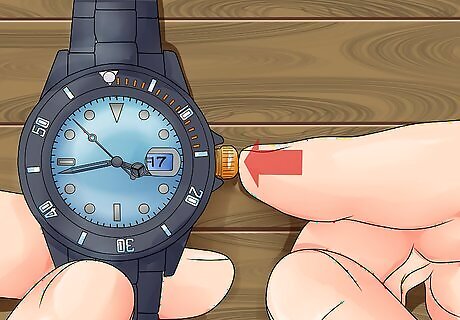
Make sure the crown is pushed all the way in. Gently push on the crown to ensure that it is pushed all the way back in. If you have a waterproof watch, you may need to double check to make sure that the crown has been screwed into place. Pinch the crown with your forefinger and thumb and tighten it while pushing it in.
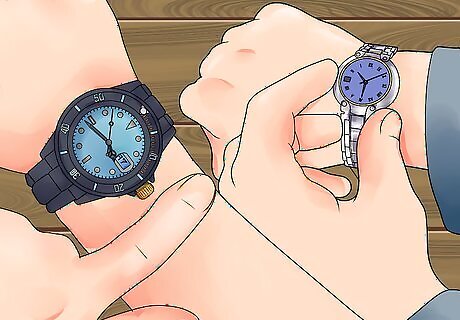
Compare your watch’s timekeeping with another watch. If your watch has been properly wound, it should keep time that is consistent with other timepieces. If you think the watch is still not performing up to standard, you might ask a watch repair shop to test your watch on a timing machine. This instrument will measure its timekeeping and speed in order to determine if it is slow or fast.
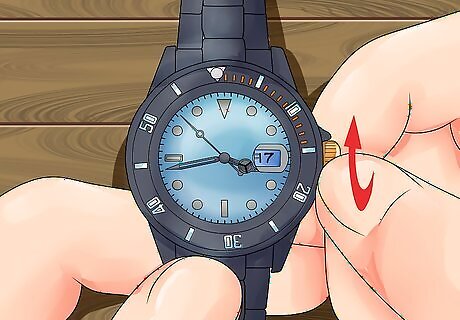
Wind the watch fully if it hasn’t been worn in a while. Automatic watches rely upon motion to keep working, and they may run down if they have been sitting in their box or in a drawer for more than a few days. Turning the crown on a watch 50 times will wind it fully and ensure it is ready to wear. Turn the crown until the second hand starts moving so you know that the watch has started keeping time. You will also likely need to reset the time and date. Wind the crown to restart your stopped watch. "When my automatic watch unexpectedly stopped keeping time, I didn't know what to do. This article explained that turning the crown 30-40 times can restart a stopped watch by re-energizing the mainspring. After winding and following the directions, I successfully got the second hand moving again." - Chet L. Automatic watches don't run perpetually. "I used to believe automatic watches would run perpetually without any winding. This article clearly explained that's a misconception—automatic watches require occasional winding to keep the mainspring tight." - Calvin D. Your watch can last for years. "After being away from automatic watches for a while, I was nervous about properly caring for one. But the clearly explained winding, setting, and storage instructions in this article answered all my questions. Now, I feel much more peaceful and confident in keeping my automatic watch running accurately for years to come." - Samuel S. You can easily care for complex timepieces. "As a new automatic watch owner, I found the maintenance steps very understandable and actionable. The article didn't use overly complex language but provided practical advice like winding techniques and crown settings. I appreciated how straightforward the instructions were — it gave me confidence in caring for this more complicated timepiece." - Mithilesh Jha (wikiHow Community Member) You must twist the crown of your watch to avoid time issues. "I bought this automatic on the Internet new. Not knowing I had to twist the crown while pushing it in to set the time caused issues. After reading this article, I learned that when setting the time on my new automatic watch, it's important to twist the crown while pushing it back in to lock the hands in place." - Des S. Have a story our readers should hear? Share it with 1 billion+ annual wikiHow users. Tell us your story here.
Using a Watch Winder
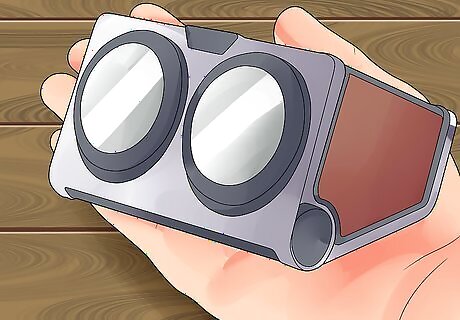
Choose which kind of watch winder you need. A watch winder is a device that keeps automatic watches wound when they are not being worn by moving the watch in a circular pattern to mimic the movement of a human’s arm. These can range in price from $50 to $400, with top-of-the-line models costing up to $8,000. There are functional, elegant and extravagant models of watch winders. Functional watch winders may be display-friendly, with nice designs; but their purpose is almost entirely functional. These are usually on the less expensive end of the scale. Cheap watch winders can be very unreliable and are not worth the price, even if it’s low. Elegant watch winders have finer quality exteriors made of wood or leather, and they are more usually display-friendly, ready to sit on a shelf or dresser. They can still be small enough to fit in a drawer or safety deposit box. Extravagant watch winders are at the top of the price range. These are usually constructed out of fine materials and made to hold multiple watches. They may have features such as temperature control, storage drawers, synchronized time displays, and USB connections.
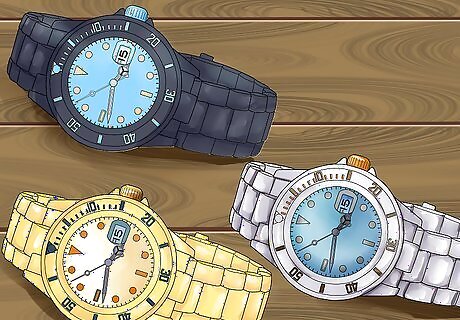
Choose how many watches you want to wind at a time. There are winders for single watches or for multiple watches. If you have a rotation of watches that you wear frequently, you may opt to get a watch winder that can hold several watches at once. If you have just one watch that you wear frequently, a single watch winder might be more useful. If you have watches you wear only once in a while, such as for a special occasion, then you don’t really need to bother putting it in a watch winder. If you know you will be wearing a watch to a wedding, for example, you can take it out the day before and wind it on your own, rather than going to the trouble of setting it in the watch winder for 30 minutes every day. Watch winders are good for collectors of automatic watches, especially if you have a large collection and want any one of your watches to be ready to go at a moment’s notice.
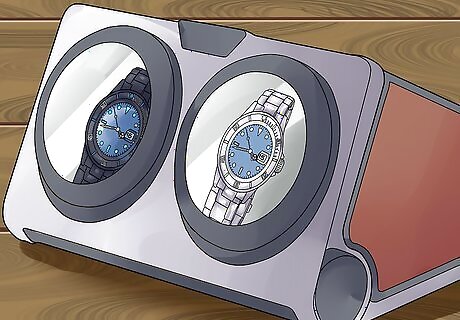
Determine the direction of the watch winder rotation. Many automatic watches rely on clockwise motion, while others rely on counter-clockwise or bi-directional movement. Check with your watch’s manufacturer to figure out which motion your watch needs.
Maintaining and Protecting your Watch
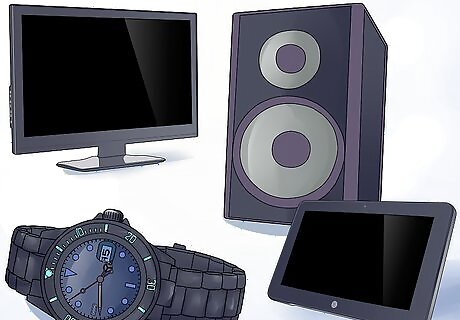
Keep your watch away from magnets. Inside the watch is a hairspring, a very delicate component that is responsible for keeping time. Exposure to magnets may cause the hairspring coils to stick together, resulting in a watch that runs too fast. While you can probably easily keep your watch away from traditional magnets, think about consumer electronics that have magnets, such as televisions, speakers and iPads. If your watch suddenly runs a lot faster or is five minutes ahead of where it ought to be, it’s possible that it was exposed to magnets and the hairspring was impacted. Take your watch to a reputable watch repair shop to have them fix the problem.
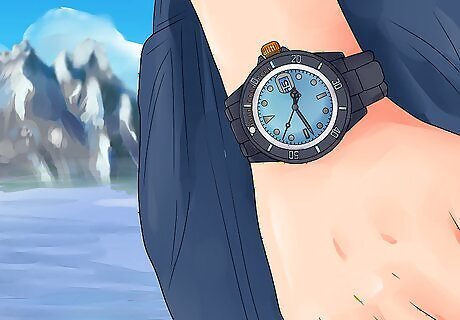
Keep your watch away from water. Most watches are able to handle a bit of water being splashed on them during normal life, such as if they get splattered while you're washing your hands or if you're walking through some rain. But for immersive water exposure, you should choose a different watch such as a waterproof quartz watch that can handle being in water longer and at greater depths.
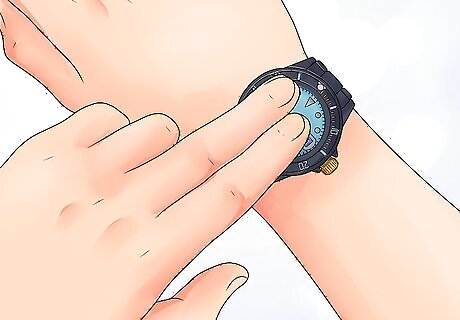
Check the temperature. Watches can be impacted by extremely cold or hot temperatures, which can affect how accurately they keep time. Most modern watches are constructed to accommodate changes in temperature, but if you are going to be somewhere with really hot or really cold temperatures, you may need to take special care with your watch.
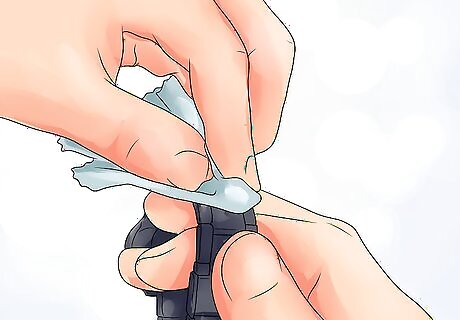
Wipe down the wrist band frequently. Watch straps can be made of various kinds of material, from leather to metal to rubber. This will depend on the aesthetic design and intended use of the watch. Rubber watch straps, for example, are typical for waterproof watches that will be used when swimming, diving or boating. Check rubber straps for cracks and tears, and replace them when they show signs of weakening. Leather straps don’t respond well to water, cologne, perfume, sunscreen, and other liquids. Rub in leather oil occasionally to improve the look and longevity of the leather. For metal straps, polish them up with a soft cloth.
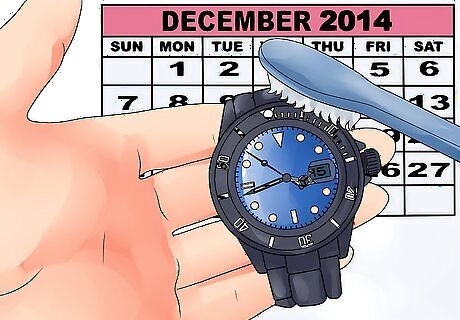
Clean the watch every few months. Your watch, especially if you wear it every day or every few days, will gather dirt, dead skin, and other grime that needs to be cleaned away. Use an old toothbrush and warm water to scrub the watch, especially around the connection point between the watch and the straps. If you have a metal band, use your toothbrush to clean it.
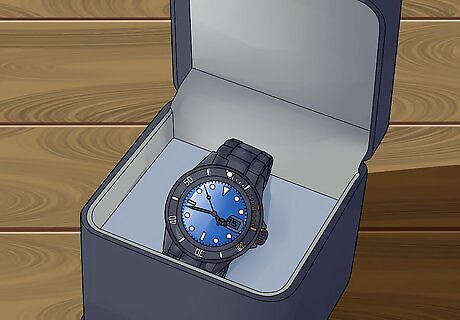
Store your watch. If you are not planning to wear your watch frequently, you should store it carefully in order to protect it from dust, moisture and theft. It will also help keep the watch’s lubricating oils from deteriorating or clogging. Store it in the manufacturer’s box or in an airtight container. If it is a particularly expensive watch, you may choose to store it in a safe deposit box. You can also store it on a watch winder.
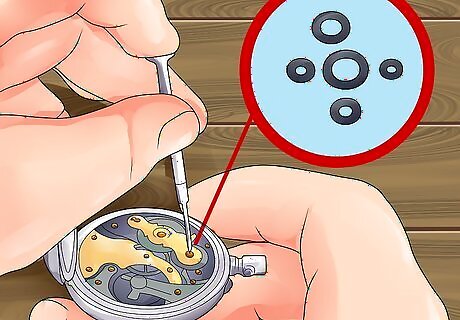
Check seals on waterproof watches on a yearly basis. Waterproof watches can get loosened up with regular wear and exposure to the elements or sand. Check the seals around the face, crown and back of the watch to make sure that it is still going to keep water out. If there are signs of wear, replace the seals. It’s best to take the watch to a watch repair shop to accomplish this, since they will have the expertise to properly replace seals.
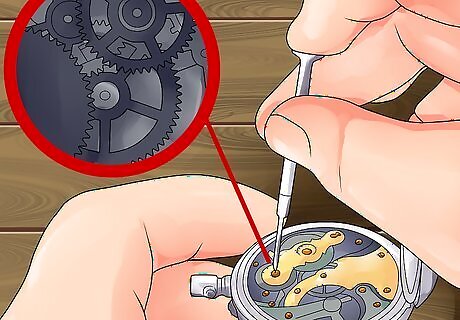
Get your watch maintained every five years. Expensive watches in particular should be maintained every few years just like a car. Their gears have lubricating oil that can get clogged, and gear teeth can be worn down. Take the watch to a reputable watch repair shop to get it relubricated. The watch repair professional will also repair or replace worn gear teeth and jewels. This maintenance can be expensive, from $250 to several thousand dollars depending on the watch. But this maintenance will prolong the life of the watch, which is important particularly if it is an heirloom watch that you want to last.




















Comments
0 comment